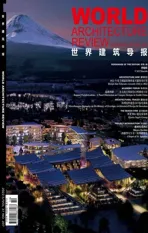梯形木屋,Aqua Bad Cortina 之家
2022-11-16GustavWilleit


建筑设计:Pedevilla 建筑师事务所 | 面积 : 200 平方米 | 地点:意大利 | 时间:2020 年 | 摄影:Gustav Willeit
Design Company: Pedevilla Architects | Built: 200 m2| Location: San Vigilio di Marebbe,Italy | Date: 2020 | Photo credits: Gustav Willeit
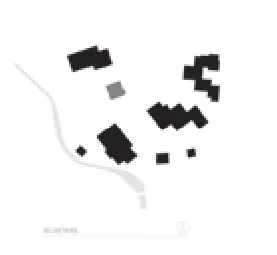

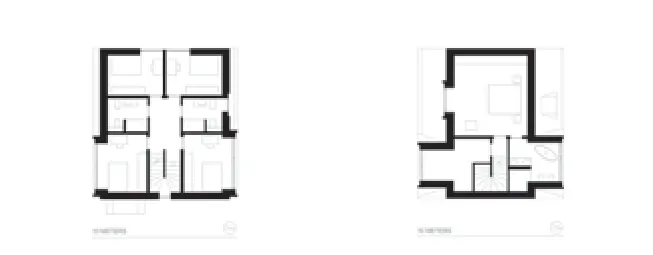

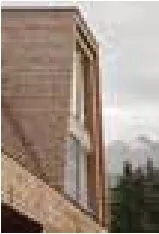

ciAsa(房子的浪漫主义称呼)是南蒂罗尔州圣维吉尔(South Tyrol's St.Vigil)的一个全木制的高寒家庭住宅,被瓦勒巴迪亚(Val Badia)的多洛米蒂山(Dolomites)包围。它矗立在一个平缓的山丘上,紧挨着一个温泉。基于房屋的古老形式,屋顶和外墙采取同样的设计手法。屋顶的逐渐上升使建筑从远处就能看到,同时,低矮的屋檐线也提供了保护。梯形作为基本元素在整个设计中反复出现。为了照亮室内,使用了梯形雨棚和天窗,天窗的光线以圆锥体的形式照进房子。
建筑的三层地面完全由 2018 年 10 月 30 日周围森林的大风暴中落下的木材制成。大量的云杉木被连接起来,用来创建外墙和内墙,通过一种特殊的技术,避免了使用粘合剂和树脂。基于 6 厘米厚的木板,制作了 36 厘米厚的外墙。即使在预制的建筑构件中,木板也是以与树木生长相同的方式铺设的——从下到上。
在内部,表面由坚硬的、手工刨光的石松木组成。所有的墙体都预制了这种表面;门窗的连接处被重新嵌入墙体。由于其温暖的颜色和特有的气味,使房间有一种幸福和温暖的感觉,在当地的传统中,石松作为房间的填充物已经使用了许多世纪。像松果一样,外墙用手工劈开的落叶松瓦片包覆。由于墙体厚度充足,房屋达到了非常好的隔热效果,这就是为什么完全没有必要增加隔热材料。
地下室的混凝土由来自附近小溪的白云岩组成,并加入了该物业自己的温泉水。在这个项目中,可持续发展受到了额外的高度重视。大部分使用的材料都是当地的天然材料。几乎不需要使用合成材料。不仅房子的木材是严格的本地材料,而且地板和浴室的石头也是由山谷中的白云岩巨石切割而成。
材料的选择是根据美学品质以及材料本身的抵抗力和耐久性。例如,用于外墙的落叶松木,即使没有经过任何处理也是耐候的。随着时间的推移,实木会形成一种铜锈,使它们具有更独特的魅力,这将使建筑随着时间的推移越来越漂亮。随着 ciAsa 的建设,材料和资源的生命周期以一种有意义的方式得到了延长。
因此,从长远来看,环境影响和成本会减少,对社会和文化方面的可持续发展也给予了极大的重视。只有来自山谷的工匠参与其中,他们能够用当地建造方法的经验和专业知识来丰富这个项目。以现代方式延续当地的传统,是对当地文化的尊重,保留了几千年的知识,而这些知识由于高科技的发展和新建筑的日益标准化而濒临灭绝。
An all-wooden family home avoiding plastic,chemicals,adhesives or resins: no need for insulation -ciAsa(Rhaeto-Romanic "house") is an all-wooden high-alpine family home,surrounded by the Dolomites of Val Badia.It stands on a gentle hill next to a thermal spring.Based on the archaic form of a house,no distinction is made between roof and façade.The roof’s rising form makes the building visible from afar,while the low eaveslines provide protection.The shape of the trapezoid appears as a recurring element in the overall design.Trapezoidal dormers and a skylight illuminate the interiors in a conelike shape.
The three overground floors are entirely made from wood that fell on 30 October 2018 during heavy storms in the surrounding forests.Massive spruce wood was salvaged to create the walls,using a special technique to avoid the use of adhesives and resins.Based on 6cm thick wooden planks,36cm strong outer walls were crafted.Even within those elements,the planks were put in the same way as the tree had grown -bottom to top.

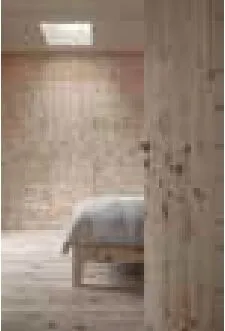
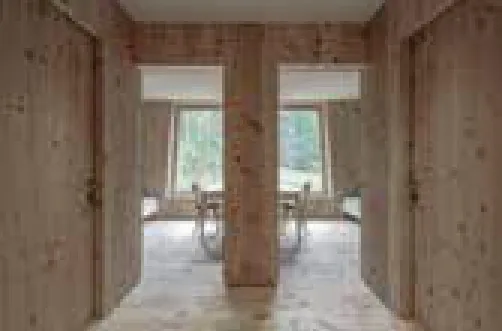
On the inside,the surface consists of solid and handplaned stone pine wood.All walls were prefabricated with this surface;connections for windows and doors were rebated into the wall elements.Because of its warm color,charisma and characteristic smell,the stone pine has been used in local tradition for many centuries as interior lining of the parlor.Like a pine cone,the façade is clad with hand-split larch shingles.Due to an ample wall thickness,the house achieves very good thermal values,making additional insulation completely unnecessary.
The concrete for the basement consists of dolomite rock from the nearby creek,enriched with the property‘s own thermal water.For this project,the aspect of sustainability was given extra high priority.The majority of the used materials is local and natural.Almost no synthetic materials had to be used.Not only the wood is strictly local,also the stone flooring was cut from dolomite boulders from the valley.The choice of materials was driven by aesthetic qualities as well as the knowledge about their resistance and durability.For example,the façade’s larch wood is weather-resistant even without any treatment.Over the years,the solid woods develop a patina,giving them greater character,making the building increasingly beautiful over time.Constructing the ciAsa,the life cycle of the materials and resources has been extended in a meaningful way.
Environmental impact and costs are thus reduced in the long term.Great importance was also attached to the social and cultural aspects of sustainability.Only craftsmen from the valley were involved,being able to enrich the project with their experience and expertise in local construction methods.The perpetuation of local traditions in modern ways respects the local culture and preserves millennia-old knowledge,which is endangered due to high-tech developments and increasing standardization of new buildings.

